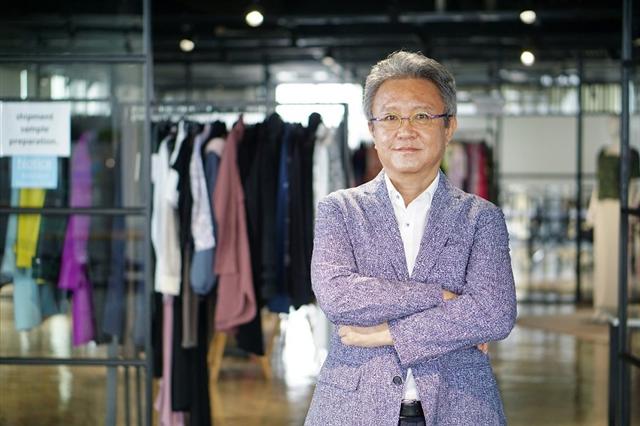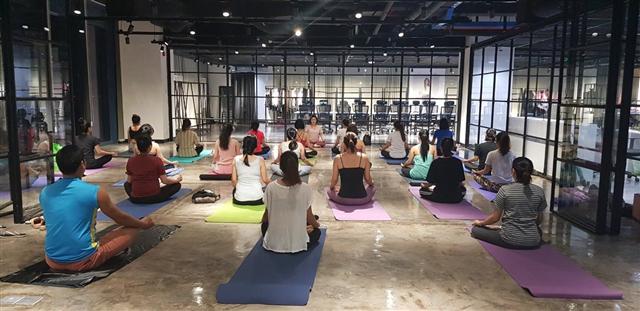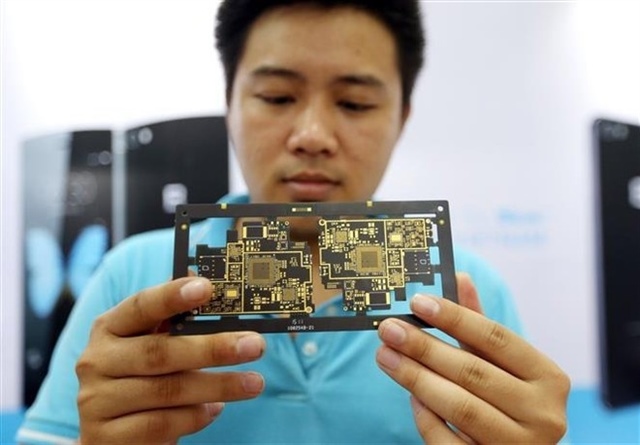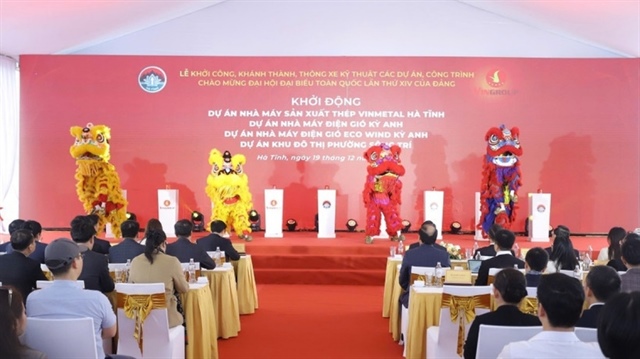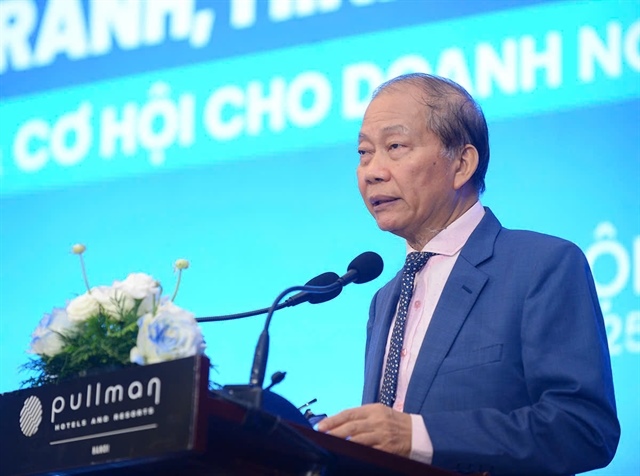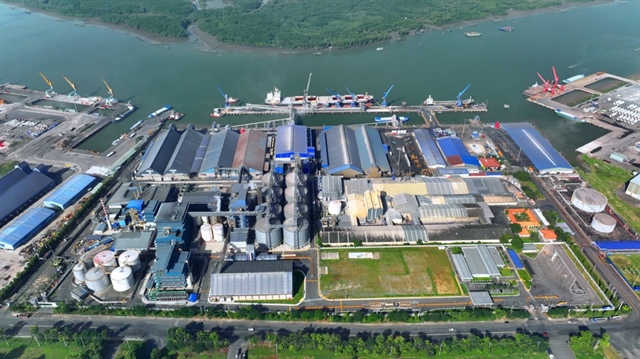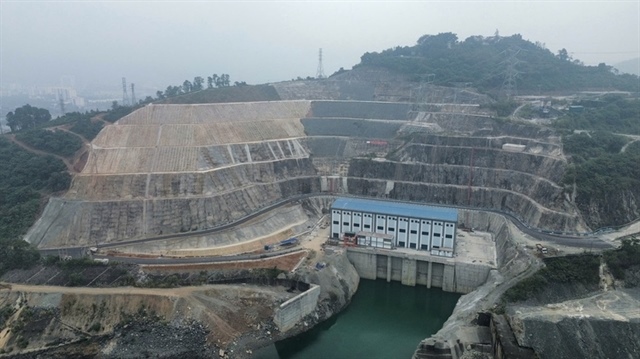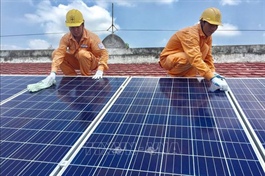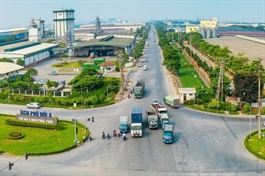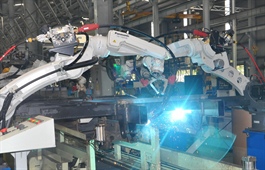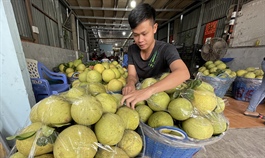A strong determination to shift production to Vietnam despite pandemic
A strong determination to shift production to Vietnam despite pandemic
Many production and business activities in Vietnam have been reduced or even suspended due to Covid-19, proving the difficulties facing domestic firms. For Poong In, it must be more difficult as the company has relocated its fashion business and resources from South Korea to Vietnam during the pandemic. However, the company is still resolved to go ahead with its plan.
The Saigon Times has had an interview with Tony Jung, President of Global Poongin Vina, to learn more about the company’s decision to shift its production to Vietnam and its short but hard and memorable journey in Vietnam.
|
|
| Tony Jung, President of Global Poongin Vina |
Why did the company still decide to relocate resources to Vietnam during such a difficult period?
Vietnam is suitable for the development of the garment sector. Having taken on the assignment at Poong In Trading two years ago, I accelerated the migration process. Last year, Poong In successfully moved 90% of its resources from South Korea to Vietnam to optimize production capacity while lowering costs.
Indeed, Vietnam has been very effective in pandemic control over the past year. And we moved simply because Vietnam is a hub and a powerhouse which is resilient even during the pandemic.
Poong In could take advantage of Vietnam’s bilateral and multilateral free trade agreements along with its open and friendly policies for foreign investors, not to mention its young and dynamic workforce.
Despite the traveling restriction in 2020, Poong In is still determined to shift its human and material resources from South Korea to Vietnam. This not only helps the company but also creates job opportunities in Vietnam. Global Poongin Vina currently has nearly 300 employees and most of them are Vietnamese.
How has Covid-19 affected Poong In’s activities in Vietnam?
- Actually, Poong In could not avoid the heavy impact of the pandemic. It underwent a 20-25% revenue decline last year.
Consumers are demanding cheaper products, while retailers could not sell many products. Most of them have experienced financial problems. They wanted us to lower the prices by 15%-25% but we could not. Therefore, we recommended that we and our customers have to find a way to survive together. We should share difficulties, otherwise we will all fail.
On March 17, 2020, most of U.S. customers asked us to stop the shipment and we had to suspend our factories’ operation.
I had to suspend operation for a couple of months, exactly three months initially, and later extended to six months. In addition, we have not received payments from our customers since March 17, 2020, and the financial crunch was a big problem to the company. We’ve now regained our financial stability, but even for the Post-Corona era, preparing for financial risks will be the top priority for the enterprises.
Without cash, we cannot survive as we have to pay salaries for workers and buy raw materials for production, and also costs to maintain factories.
Nevertheless, we tried our best to keep Vietnamese staffs because Poong In established its business in Vietnam in 2014 and over the past six years, we have trained and educated Vietnamese staffs to localize and prepare for entire our shift to Vietnam
We have also been making our best efforts to maintain our core markets and partners, mainly in the United States and Europe. In other words, Poong In took advantage of the falling time to rather fortify its trusted oversea partnerships. Large customers continue to trust Poong In as their partner.
Despite the decline, I believe that Poong In has garnered long-term values, capacity and prestige reassured by our major partners. This year, Poong In is estimated to recover a 15-20% revenue and by 2022, it expects to fully recuperate capacity and revenue to its past peak in 2019.
What are difficulties and advantages of Poong In when its production line is shifted to Vietnam?
- They are not difficulties, but factors that we need to overcome. Local laborers’ working attitude and intelligence level are great but high-level designers, such as high-skilled pattern makers, are not enough. Though the average level of those at these positions has improved, that’s still not enough.
In the beginning stage of migration of Global Poongin Vina in HCMC since 2014, we’ve established HR programs in order to overcome cultural differences and stabilize turn-over rate of local employees on top of our increasing production capacities for past years since we came in Vietnam. The established programs include monthly/quarterly job training and benefit programs such as yoga class, office cafeteria, office library, workshop, and etc. Doing so, Poong In endeavored and invested to make this company a symbiotic nexus where its multinational people inspire one another and benefit mutually. This was not an option but a must as Poong In already acknowledged how pivotal its Vietnam office would be for production management and sales communication and thus its successful landing on Vietnam too.
This is the responsibility of not only the Government but also companies that have invested in the country. That’s the reason why we are educating new beginners to elevate their skills step by step.
Additionally, we have to import raw materials, mainly from China and South Korea. For higher quality materials, we import them from Italy, Japan and Turkey.
To move to the next level, there are two key factors that the local fashion sector needs to improve: designing capability and raw material sources.
|
|
| Poong In established Yoga class for all staffs - This is one of many programs of Poong In to overcome cultural differences. |
How is the company changing its strategy in response to Covid-19?
- Covid-19 made it almost impossible to travel and host physical business gatherings. But we still need to work with foreign partners. So Poong In has taken advantage of technologies.
My customers could not travel to Vietnam last year and I could not see them face to face, so we have to be very smart to use digital technologies.
For example, for product introduction, Poong In has utilized online platforms which offer “virtual wardrobe and virtual catwalks” using 3D-based technologies that enable customers to experience products in rendered reality.
As the fashion business is time-sensitive, in this business, if you lose the on-time delivery, we will have to pay huge costs.
In addition, Poong In is to adopt online operation management to facilitate operation between its offices and factories. I expect Poong In to embody this change in a smart factory to be founded in Quang Tri in the near future. I am certain that Poong In is one of the companies most ready to the new game.
You have mentioned a new factory in Quang Tri. How will the plan be deployed?
- Currently, Global Poongin Vina has six factories, four in Binh Duong, one in Danang and another in Haiphong. The next factory in Quang Tri will be our largest ever.
I cannot say it is a fully-smart factory but a semi-smart one with the most cutting edge technologies. Although the completion of the plant is being halted due to the Covid-19 pandemic, Poong In will always keep up its intention. If the disease is controlled, it is expected that in 2022, the plant will be able to go into operation.
The factory will not only optimize automation capabilities with remote control but also apply an environment-friendly operating technology to ensure the safety and health of employees and be installed with solar panels.
How do you view the prospects and challenges of the Vietnamese garment sector in the coming years?
- Opportunities for the Vietnamese garment sector come from the Government’s effective anti-pandemic efforts. This creates conditions for enterprises, especially foreign-invested ones such as Poong In to maintain production and business activities. I have seen a remarkable growth in the garment sector and the Vietnamese economy as a whole over the past two decades, since my first contact with this country.
Labor costs are still cheaper than in developed economies. The young, abundant and dynamic manpower is a motivation that secures Poong In’s development foundation.
However, I believe that there are still challenges to the garment sector in Vietnam. The development of local sources of high-quality raw materials and the training of employees to meet the increasingly high standards of high-end brands is required for the trend of technology application, 3D designing and overall RND power.
|
|
| Poong In is trying to meet the increasingly high standards of high-end brands. |
Could you share Poong In’s specific plans for this year while the new Covid-19 pandemic is still showing complicated developments with new coronavirus variants?
- This year, we strive to restore about 90% of our business operations, recover our loss business, seek new customers and develop new business models. At the same time, the company accelerates the completion of the factory in Quang Tri and complete the relocation of resources from South Korea to Vietnam.
One of Poong In’s core plans is to strengthen its division in Vietnam, to train designers who are capable of inheriting and fulfilling the increasing demands of global luxury brands and high-end retailers.
With the current potential, I hope Poong In to stand up as the Vietnam’s largest foreign-invested fashion export company. Global Poongin Vina will grow with Vietnamese here in Vietnam, hopefully for long years.
During the pandemic, consumers have changed their behaviors and lifestyles. Therefore, we must prepare for a changing market. Working environment and the way of working will be different.
Thank you very much.


